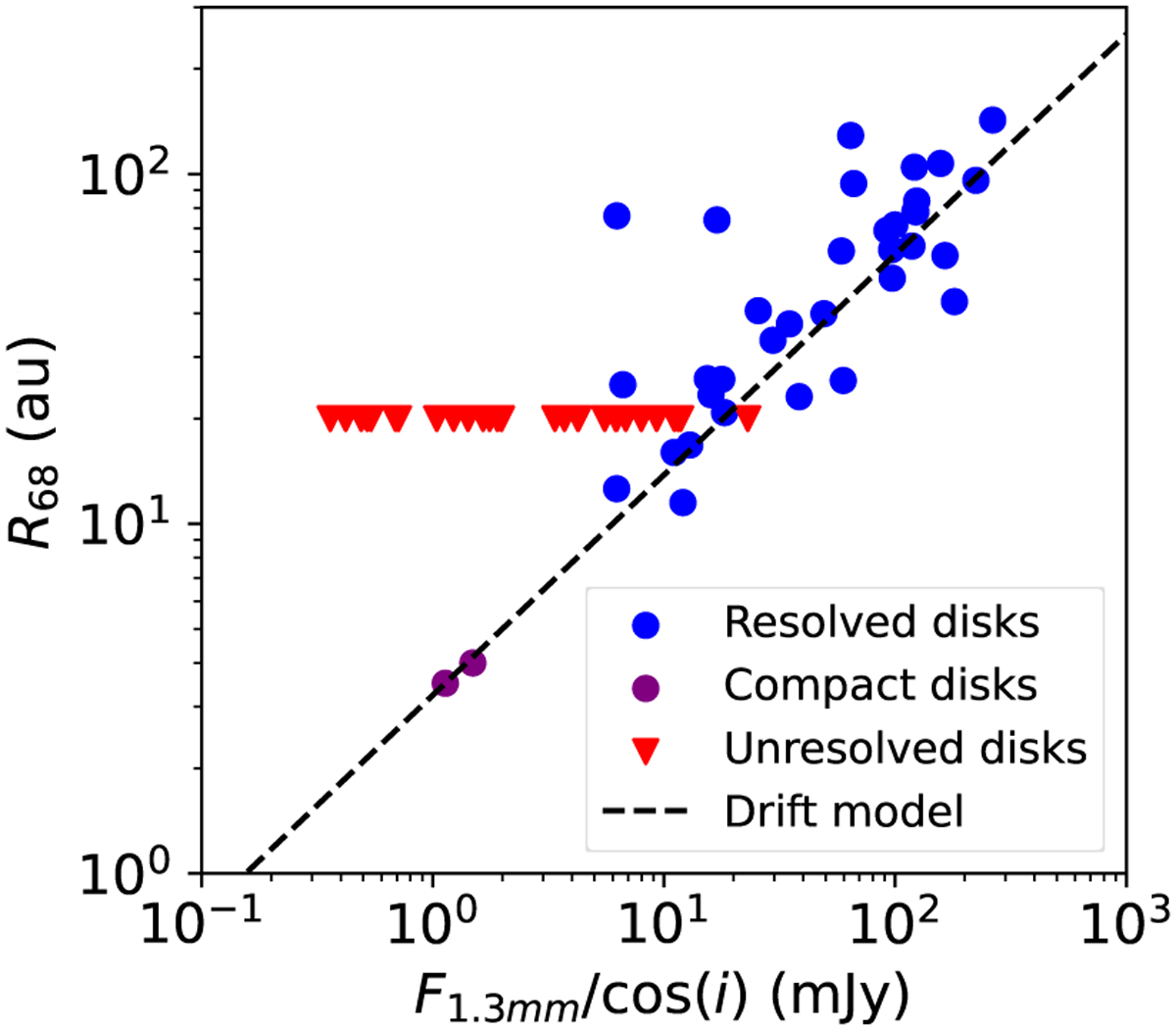Fig. 1

Download original image
Size-luminosity diagram of all Class II disks in Lupus, based on data from Ansdell et al. (2018), Tazzari et al. (2021), and van der Marel et al. (2022) (disks around M dwarfs, present fluxes less than ~90 mJy). The R68 parameter refers to the size of the dust disk, which is typically measured with a curve-of-growth method, encircling 68% of the total flux (Hendler et al. 2020). F1,3mm is the observed flux and i represent the inclination of the disks with respect to the observer. The expected trend for drift-dominated disk models from Rosotti et al. (2019) is shown with a dashed line. Other than two resolved compact disks of 3-5 au radius from high-resolution observations in van der Marel et al. (2022) (purple dots), the majority of compact disks are unresolved with an upper limit of <20 au on their radius (red triangles). Considering the trend in the plot as well as the predictions from drift models, in reality most of these disks are expected to be 2-10 au in radius.
Current usage metrics show cumulative count of Article Views (full-text article views including HTML views, PDF and ePub downloads, according to the available data) and Abstracts Views on Vision4Press platform.
Data correspond to usage on the plateform after 2015. The current usage metrics is available 48-96 hours after online publication and is updated daily on week days.
Initial download of the metrics may take a while.


